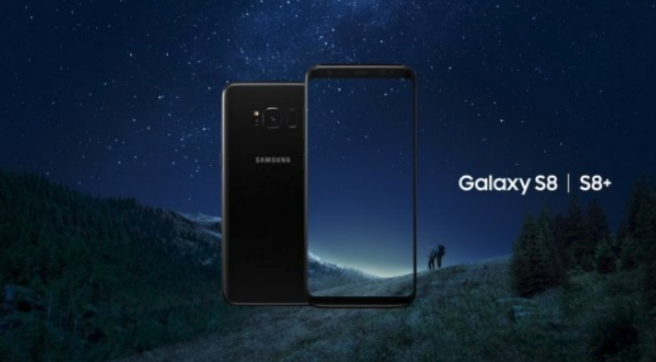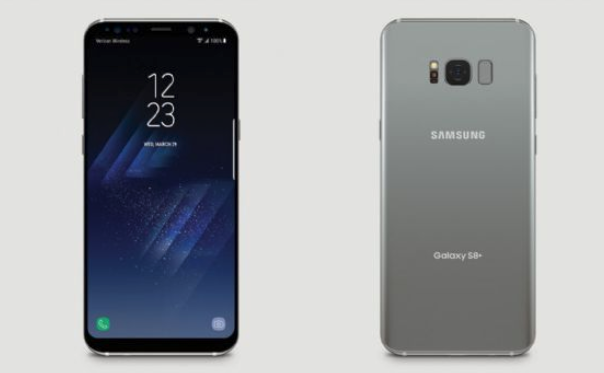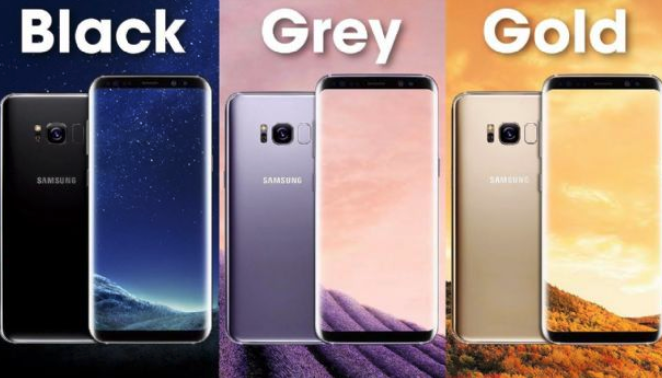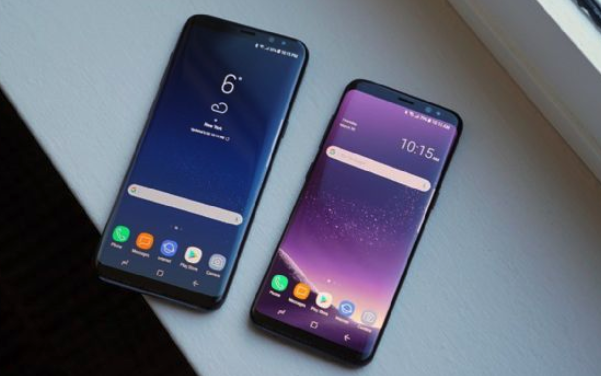Samsung, which competes directly with the Galaxy S series for the iPhone, is the flexibility of the Android operating system and is the most serious competitor of Apple for a short time on Sunday. Especially with the Galaxy S2, S3, S4 and S7, the brand has been doing very well, and with the last year’s Note 7, unfortunately, it was one of the biggest crises of its history. Samsung, suffering from a problem in the battery of the smart device, was left to collect all the Note 7s when probing could not find a definitive solution. To avoid any flaws in the Galaxy S8, Samsung wanted to keep up with the success of its predecessor, the S7, with a much more innovative and beautiful phone. With the introduction of the Galaxy S8, Samsung was able to fascinate us with design, especially those who like the slim phone.

Samsung wants to transfer as much of the design trend as possible to Xiaomi’s Mi Mix with the user, and the Samsung Galaxy S8 Plus has a screen size of 6.2 inches and a resolution of 1440 x 2960 pixels. The Samsung Galaxy S8, which has a zero edge on the sides and a thin frame on the top and bottom, seems almost entirely on the screen. Galaxy S8 Plus with 529 PPI pixel density is protected by Corning Gorilla Glass 5 on the protection side. Designed to be more scratch-resistant and resistant to breakage than the previous model, the Gorilla Glass 5 is a must in a phone with a curved screen with a very slim frame like the S8. Nevertheless, it would be beneficial for the users who buy the phone to use an unbreakable glass cover and protective cover just in case. Another important display feature of the Galaxy S8 Plus is that the “Home” key on the screen is supported by 3D Touch. So even when the screen is off, when we press the “Home” button at the bottom of the screen, the screen wakes up and you can see the keylock screen. With the Face Detection and Iris browser features of the Samsung Galaxy S8, you can quickly unlock the phone with the help of the “Home” key with 3D Touch.

However, if you wear glasses in the dark or while using the Iris scanner, you may experience difficulties in sensing. When you want to turn on the phone with your finger, you need a much bigger problem. The fingerprint reader is unfortunately located on the back of the phone and just to the right of the camera lens. The fingerprint sensor, which is in a position where even bigger users will find it difficult, is one of the biggest flaws of the Samsung Galaxy S8. Another significant difference compared to the Galaxy S7, which is the design of the phone, is that the rear camera lens is no longer projected. It is neither worth your hand nor a flaw in the image. Along with the camera lens, the camera flash located immediately next to the lens, the SpO2 and the heart rate sensor are reset and the frames are removed. First of all, let’s start with the headphone output of the phone. Samsung’s headphone jack after iPhone 7 is very lucky and it comes with a headphone jack that allows us to use our own ears comfortably. Speaking of headphone output, let’s just say that Samsung has earned the headphones that are manufactured by AKG, but are still manufactured by Samsung.

But I have to say immediately that the headphones that come out of the box of the Galaxy S8 are both very comfortable and in a level that will delight you in terms of sound quality. In addition, the sound insulation of the ears is very successful, so if you are wearing a headset, your connection with the outside world is almost completely cut off. Samsung used MicroUSB instead of USB Type-C, which is not very common in the past years. Although this is a negative situation for some users, many users are generally satisfied with the situation. This year Samsung, with the Galaxy S8, switched to the new generation of the full-featured interface. Galaxy S8 came with USB Type-C support. With USB Type-C, it was able to transfer data much faster. On the performance side, the Samsung Galaxy S8 is powered by the Exynos 8895 processor, which it has developed. This 8-core processor has 4 cores running at 2.3 GHz while the other 4 cores are ready for low power applications. In these cores, the frequency is limited at 1.7 GHz. When we consider that for many years no Android phone has been bothered by performance in any way, we can easily say that Samsung Galaxy S8 can deliver the performance expected from a flagship ship very, very comfortably.

Powered by Mali’s G71 MP20 on the GPU side, the Samsung Galaxy S8 is able to deliver full performance in all the high graphics quality games for the Android operating system. Supported by 4GB of RAM on the RAM side, the Samsung Galaxy S8 is able to offer multiple application performances without any trouble thanks to Samsung’s own optimizations. On the memory side, the 64 GB of memory, the Galaxy S8, allows you to add 256 GB to your memory with the microSD card slot. Having MicroSD support is also a factor that seriously increases the albinism of Galaxy S8. Nowadays, as 4K videos are gradually becoming standardized, the need for high memory capacity naturally increases. On the camera side, there is no serious improvement compared to the Galaxy S7. In terms of hardware, the Galaxy S8 camera is exactly the same as the Galaxy S7. The Galaxy S8 comes with an f / 1.7 aperture at a resolution of 12 MP. As we remember from the Galaxy S7, the Galaxy S8 is quite successful in low light environments, and it succeeds in getting notes from us. With the OIS, Optical Image Stabilizer, the vibrations are as prevalent as possible and provide a smooth experience. You can also take photos in 4K mode with the Galaxy S8 and 9 MP resolution at the same time. This is one of the successful features of the phone. On the front camera side, we meet a Selfie camera at 8 MP resolution and still an f / 1.7 aperture like the main camera.

 Al Premium Food Mart
Al Premium Food Mart Bestco Foodmart
Bestco Foodmart Danforth Food Market
Danforth Food Market Fiesta Farms
Fiesta Farms Food Basics
Food Basics Foodland
Foodland Foody Mart
Foody Mart Fortinos
Fortinos FreshCo
FreshCo Giant Tiger
Giant Tiger Goodness Me
Goodness Me Great Food Supermarket
Great Food Supermarket Highland Farms
Highland Farms Independent City Market
Independent City Market Loblaws
Loblaws Longos
Longos M&M Food Market
M&M Food Market Marche Adonis
Marche Adonis Metro
Metro Michael-Angelo's
Michael-Angelo's Nature's Source
Nature's Source No Frills
No Frills P&G brandSAVER
P&G brandSAVER Pat Mart
Pat Mart Real Canadian Superstore
Real Canadian Superstore Rexall
Rexall Seasons Food Mart
Seasons Food Mart Shengthai Fresh Foods
Shengthai Fresh Foods Shoppers Drug Mart
Shoppers Drug Mart Sobeys
Sobeys Sunny Food Mart
Sunny Food Mart T&T Supermarket
T&T Supermarket The Big Carrot
The Big Carrot Valu-Mart
Valu-Mart Walmart
Walmart Whole Foods
Whole Foods Wholesale Club
Wholesale Club Save-On-Foods
Save-On-Foods Safeway
Safeway Family Foods
Family Foods AG Foods
AG Foods Red Apple Stores
Red Apple Stores Army & Navy
Army & Navy Box by NoFrills
Box by NoFrills Calgary Co-op
Calgary Co-op IGA
IGA Lucky Supermarket
Lucky Supermarket Bulk Barn
Bulk Barn Arz Fine Foods
Arz Fine Foods Costco
Costco Busy Bee Tools
Busy Bee Tools Ace Hardware Canada
Ace Hardware Canada Ashley Furniture Homestore
Ashley Furniture Homestore Canadian Tire
Canadian Tire Home Depot
Home Depot Home Furniture
Home Furniture Home Outfitters
Home Outfitters Hudson's Bay
Hudson's Bay IKEA
IKEA JYSK
JYSK Leon's
Leon's Linen Chest
Linen Chest Lowe's
Lowe's Michaels
Michaels Princess Auto
Princess Auto RONA
RONA Sears
Sears Sleep Country Canada
Sleep Country Canada The Brick
The Brick The Sleep Factory
The Sleep Factory The Source
The Source United Furniture Warehouse
United Furniture Warehouse Reno Depot
Reno Depot London Drugs.
London Drugs. Fields
Fields Surplus Furniture & Mattress Warehouse
Surplus Furniture & Mattress Warehouse Home Hardware
Home Hardware 2001 Audio Video
2001 Audio Video Best Buy
Best Buy Factory Direct
Factory Direct Staples Canada
Staples Canada Tech Source
Tech Source Visions Electronics
Visions Electronics Family Health Care Pharmacy
Family Health Care Pharmacy Guardian
Guardian I.D.A.
I.D.A. Pharmasave
Pharmasave Remedy's Rx
Remedy's Rx PharmaChoice
PharmaChoice Atmosphere
Atmosphere National Sports
National Sports Sport Chek
Sport Chek Cabela's Canada
Cabela's Canada PetSmart
PetSmart Ren's Pets Depot
Ren's Pets Depot Pet Valu
Pet Valu Total Pet
Total Pet
